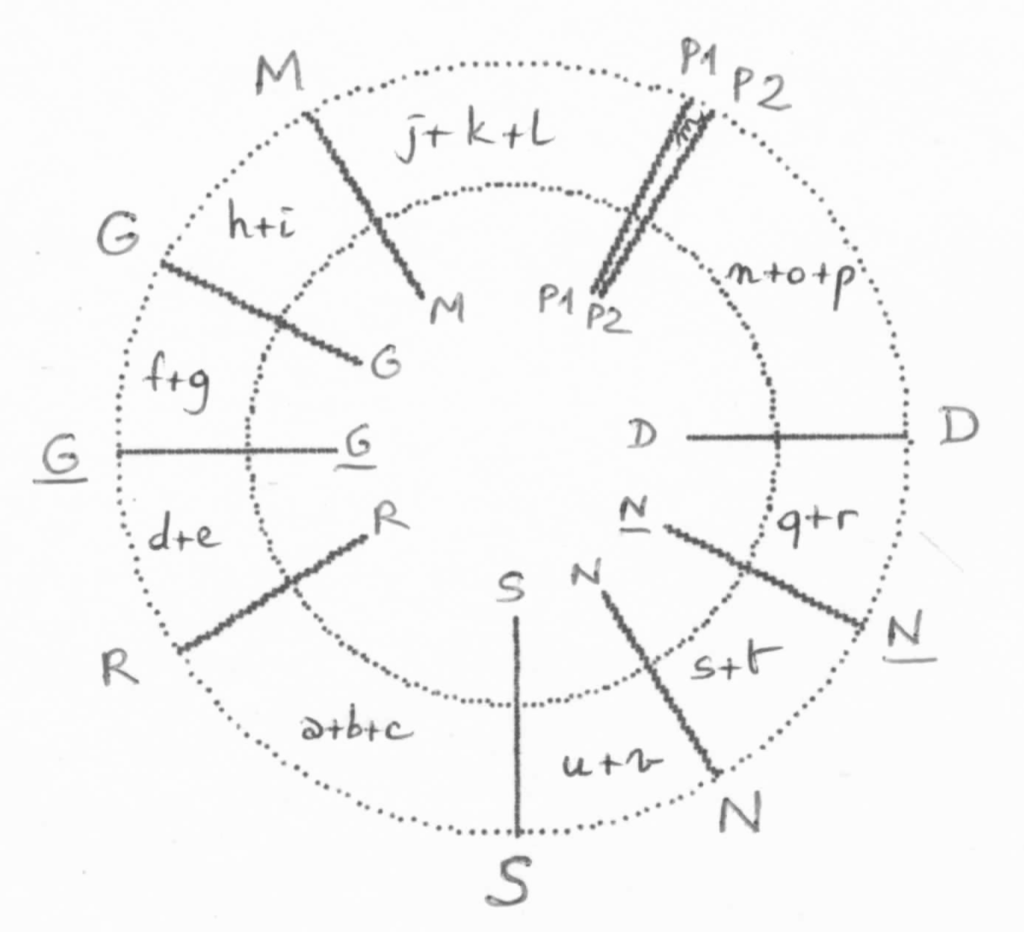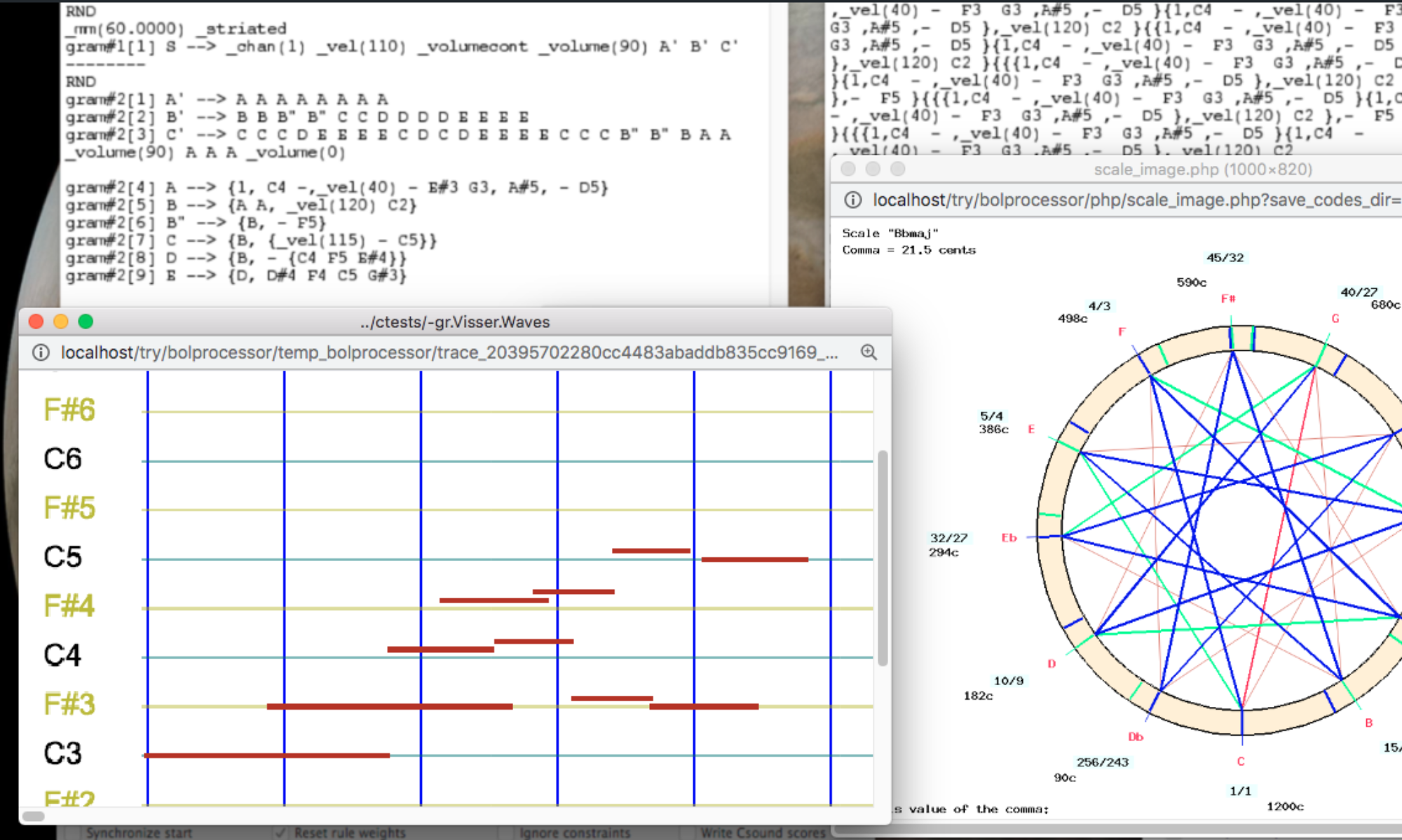Bernard Bel
Note interne, Groupe Représentation et Traitement des Connaissances (CNRS), Marseille 1988.
👉 Cited on page The two-vina experiment
Résumé
Le Natyashastra, un traité sanscrit sur la musique, la danse et le théatre, contient une théorie des échelles musicales qui sert de base à la classification de formes mélodiques. De nombreux auteurs indiens et occidentaux ont proposé des interprétations de cette théorie, et plus récemment des travaux ont été menés pour valider ces interprétations à partir de données acoustiques tirées de la pratique musicale en Inde. Cet article énonce les raisons pour lesquelles une telle validation n'est pas possible, et propose une interprétation générale de la théorie s'appuyant sur la résolution de systèmes d'équations linéaires. Les systèmes déduits des prémisses ont un degré d'indétermination. Les ensembles solutions correspondent à diverses hypothèses permettant de lever l'indétermination, tenant compte de considérations acoustiques correspondant à diverses conceptions musicales: tempérament, intonation juste, etc.
Excerpts of an AI review of this paper (Academia, June 2025)
Summary

This paper offers a detailed mathematical exploration of the scale theory described in Bharata’s Natyashastra, focusing particularly on the concept of 22 shrutis (microintervals) that constitute various Indian musical scales. It encompasses historical context, theoretical derivations of interval sizes, and potential tuning configurations. The author combines textual evidence from ancient Sanskrit sources (especially the first six chapters of the Natyashastra) with algebraic methods to propose both tempered and just-intonation systems consistent with Bharata’s framework. Experimental references — such as monochord experiments, work with an electronic Shruti Harmonium, and Melodic Movement Analyser (MMA) analyses — are included to connect theoretical possibilities with practical musical performance.
Organization & Clarity
Historical Introduction and Context
- The paper begins by situating Bharata’s Natyashastra within the continuum of Indian music theory, referencing key figures and experiments from both Indian and Western traditions.
- This historical background sets the stage for the discussion, although in places it could be streamlined to highlight the central premise of the mathematical framework.
Algebraic Formulation
- The author systematically translates Bharata’s textual statements into sets of algebraic equations.
- The transition from textual assertions (e.g., “SP2 = 13 shruti-s”) to equations in cents is presented step by step, aiding clarity.
Figures and Tables
- The paper frequently references figures (e.g., “fig 1”, “fig 2”, etc.) and tables of coefficients resulting from these equations.
- These graphical or tabular representations appear to play a critical role in helping readers visualize relationships but would benefit from clearer references and labeling to make them more accessible.
Overall, the content is laid out in a sequential manner, moving from ancient theory to algebraic method, then to specific tuning systems, and finally to possible applications.
Technical & Theoretical Contributions
Translating Ancient Theories into Modern Frameworks
- The paper bridges traditional Indian music theory with modern mathematical notation, a valuable approach that can expand understanding for researchers from varying backgrounds.
- The distinction made between “topological” relationships (i.e., how intervals add up) and actual frequency ratios is crucial, and the paper addresses potential pitfalls in presuming a single “correct” interpretation.
Multiple Tuning Scenarios
- The author explores a range of tuning procedures (e.g., harmonic major third vs. Pythagorean major third) and compares their outcomes.
- The paper shows how variations in the pramana shruti (the “one-shruti” unit) can produce markedly different yet theoretically valid scales.
Focus on Consonance and System Consistency
- By imposing constraints of murcchana (shifting tonics), the paper demonstrates how the 22 microtones can remain internally consistent.
- The derivation of tempered and just-intonation variants helps illustrate how “ancient” theory can align with current theoretical concepts such as commas, semitones, and limmas.
Methodological Rigor
Logical Steps of Equation Building
The paper methodically shows how each note relationship leads to an equation or inequality. This approach is clear, though some dense sections (especially when listing large sets of equations) may challenge readers less accustomed to mathematical proofs.
Scope and Assumptions
The paper acknowledges an important assumption: that ancient textual descriptions can be faithfully transposed into algebraic relationships. This is necessary but might benefit from more explicit caveats about interpretational breadth in historical musicology (e.g., variations in textual transmission, potential scribal changes, etc.).
Use of Empirical Data
Empirical references to tuning experiments (e.g., on the Shruti Harmonium) complement the theoretical work. Future expansions could include more detail on the data collection and statistical analysis, if applicable.
Strengths
- Clearly grounded in both historical textual sources and modern mathematical treatments.
- Provides multiple pathways (tempered vs. just) and highlights how each maintains internal consistency per Bharata’s intervals.
- Shows versatility in microtonal arithmetic, illustrating that multiple valid interpretations exist instead of a single, fixed approach.
Overall, this paper illuminates the complexity and depth of Bharata’s scale theory by marrying philological analysis with algebraic precision. The discussion of how these ancient concepts can produce wide-ranging, internally consistent tuning systems contributes substantially to ethnomusicology, Indian music scholarship, and broader microtonal research.
Skip to PDF content